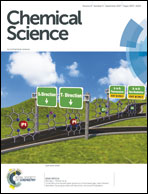Elucidation of the relative and absolute stereochemistry of the kalimantacin/batumin antibiotics†
Abstract
Kalimantacin A and batumin exhibit potent and selective antibiotic activity against Staphylococcus species including MRSA. Both compounds are formed via a hybrid polyketide synthase/non-ribosomal peptide synthetase (PKS-NRPS) biosynthetic pathway and from comparison of the gene clusters it is apparent that batumin from Pseudomonas batumici and kalimantacin from P. fluorescens are the same compound. The linear structure of this unsaturated acid was assigned by spectroscopic methods, but the relative and absolute stereochemistry of the five stereocentres remained unknown. Herein we describe isolation of kalimantacin A and two further metabolites 17,19-diol 2 and 27-descarbomyl hydroxyketone 3 from cultures of P. fluorescens. Their absolute and relative stereochemistries are rigorously determined using a multidisciplinary approach combining natural product degradation and fragment synthesis with bioinformatics and NMR spectroscopy. Diol 2 has the 5R, 15S, 17S, 19R, 26R, 27R configuration and is the immediate biosynthetic precursor of the bioactive kalimantacin A formed by oxidation of the 17-alcohol to the ketone.

- This article is part of the themed collection: Celebrating our 2020 Prize and Award winners


 Please wait while we load your content...
Please wait while we load your content...